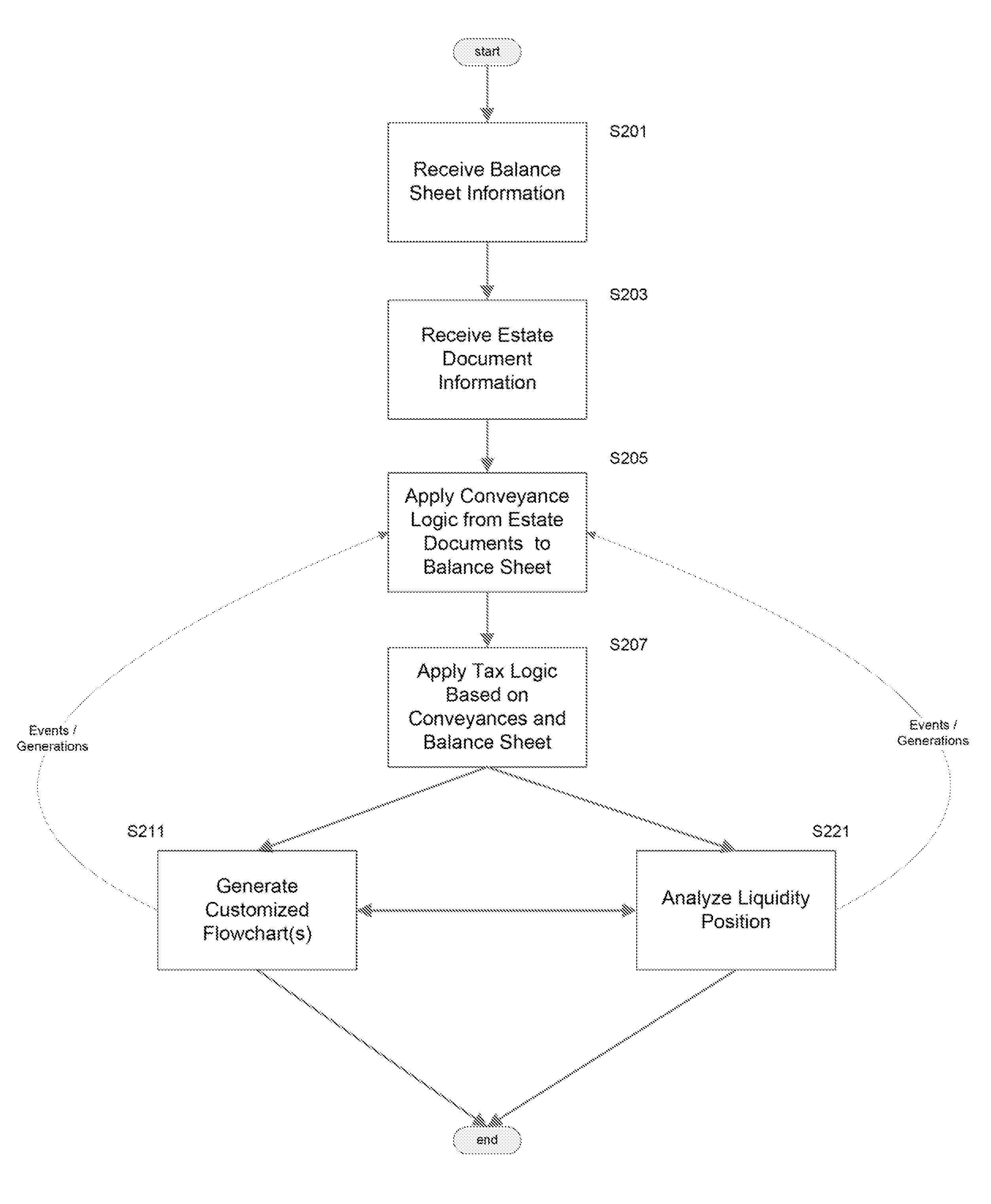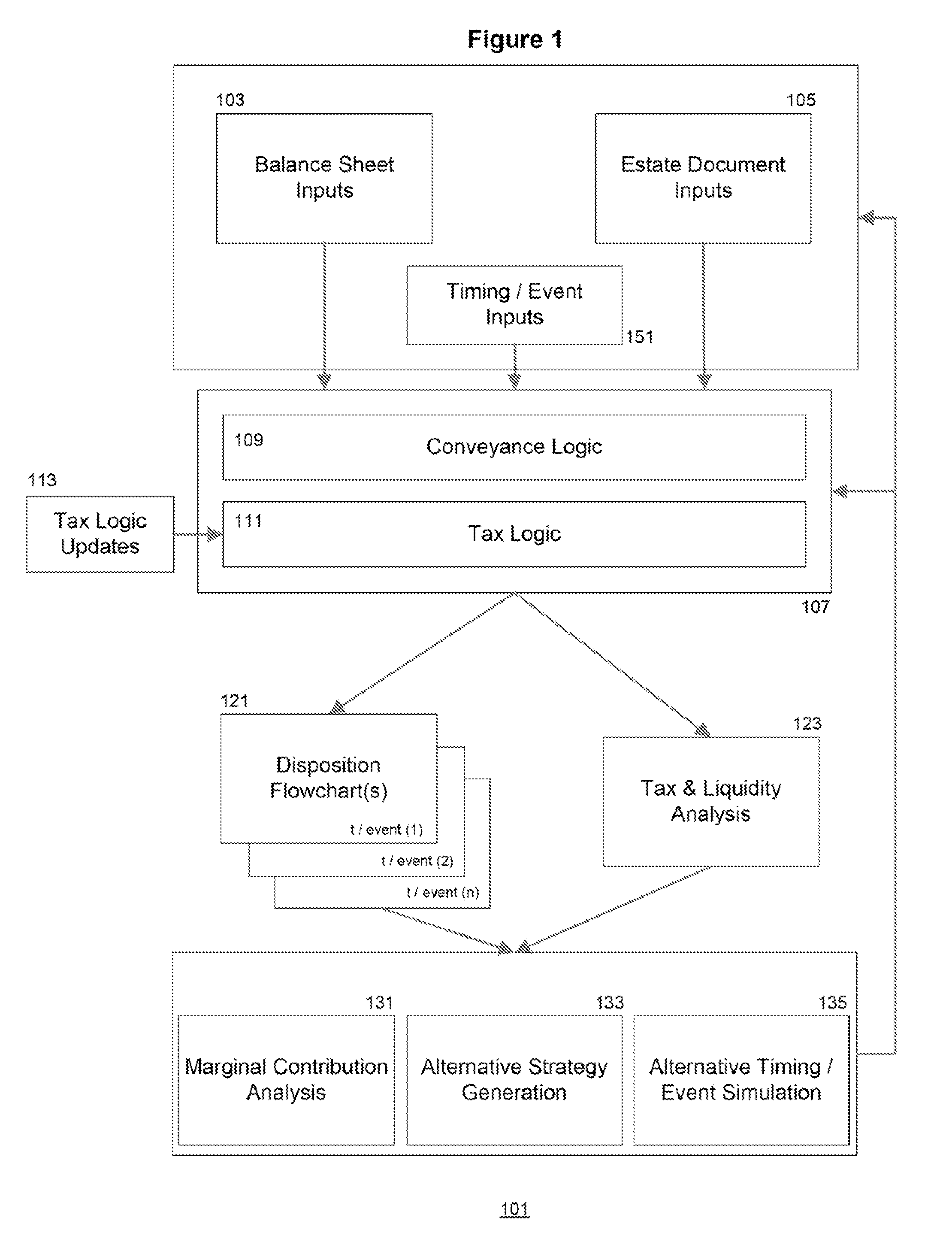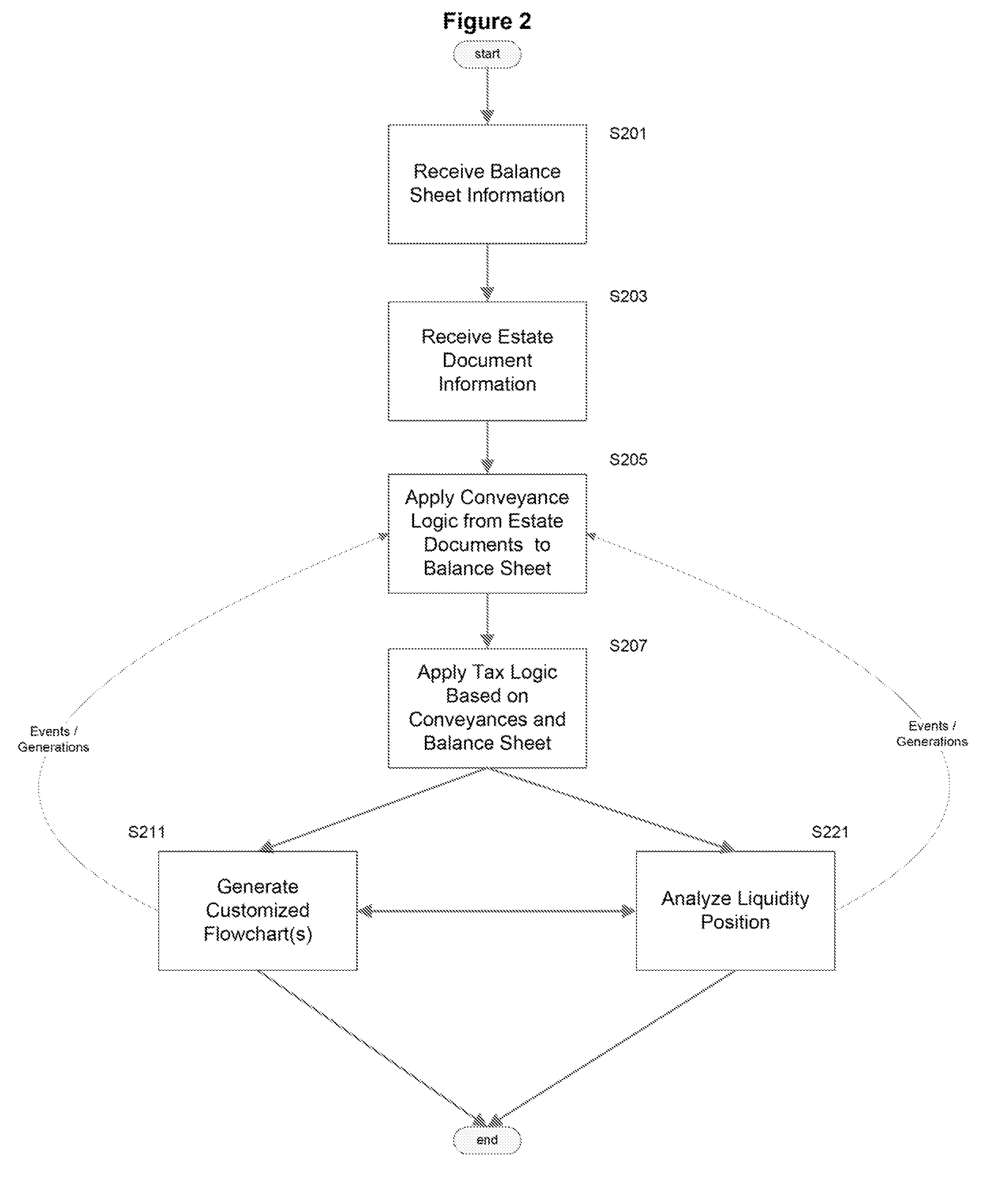Estate Disposition Modeling
- Summary
- Abstract
- Description
- Claims
- Application Information
AI Technical Summary
Benefits of technology
Problems solved by technology
Method used
Image
Examples
Embodiment Construction
[0027]Various disclosed embodiments are generally directed to a system and computer-implemented method of modeling estate disposition.
[0028]FIG. 1 illustrates a schematic diagram according to a disclosed embodiment. Generally, various disclosed embodiments receive balance sheet 103 and estate document inputs 105 corresponding to an estate planning client, apply conveyance 109, taxation 111 and other 107 logic to the client's inputs to generate one or more customizable disposition flowcharts 121 visually depicting the flow of estate components to beneficiaries and / or an estimate of the estate's future liquidity status 123. Taxation logic includes information associating what assets are taxed, the extent to which these assets are taxed, under what conditions the tax is applied, and how the tax is applied. Taxation logic includes rules associated with the relevant federal and state tax codes. In one embodiment, timing or event inputs 151 allow for the projection of estate disposition a...
PUM
 Login to View More
Login to View More Abstract
Description
Claims
Application Information
 Login to View More
Login to View More - R&D
- Intellectual Property
- Life Sciences
- Materials
- Tech Scout
- Unparalleled Data Quality
- Higher Quality Content
- 60% Fewer Hallucinations
Browse by: Latest US Patents, China's latest patents, Technical Efficacy Thesaurus, Application Domain, Technology Topic, Popular Technical Reports.
© 2025 PatSnap. All rights reserved.Legal|Privacy policy|Modern Slavery Act Transparency Statement|Sitemap|About US| Contact US: help@patsnap.com



